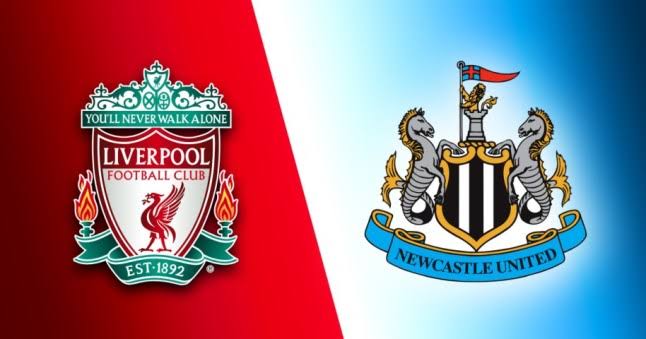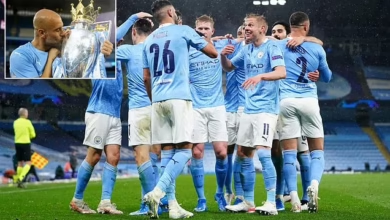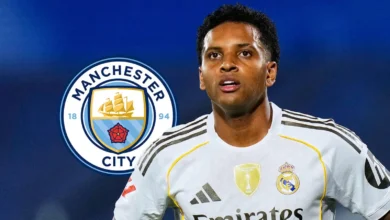Liverpool’s Tactical Evolution: A Comprehensive Analysis of Modern Football Strateg

Liverpool Football Club stands as one of the most tactically sophisticated teams in modern football, representing a fascinating case study in how elite clubs adapt their playing philosophy to meet contemporary challenges. Under various managerial regimes, the Reds have demonstrated remarkable tactical flexibility while maintaining core principles that define their identity. This analysis explores Liverpool’s current tactical approach, their evolution under different managers, and how their system creates one of the most compelling football spectacles in world football.
The club’s tactical journey reflects broader trends in modern football, where high-intensity pressing, positional fluidity, and data-driven decision-making have become paramount. Liverpool’s ability to blend traditional English football values with continental tactical sophistication has created a unique playing style that continues to influence teams worldwide.
Liverpool’s tactical identity was fundamentally shaped by Bill Shankly and Bob Paisley, who established a philosophy centered on collective responsibility, work rate, and intelligent movement. This foundation emphasized that every player must contribute defensively and offensively, a principle that remains central to the club’s modern approach.
The Shankly era introduced the concept of total football to English shores, encouraging players to be comfortable in multiple positions and phases of play. This tactical flexibility became a hallmark of Liverpool’s success, allowing them to adapt to different opponents while maintaining their core identity. The emphasis on passing and movement, rather than relying solely on individual brilliance, created a sustainable model that could be passed down through generations of players.
Under Paisley, these principles were refined and systematized, creating one of the most successful periods in the club’s history. The tactical discipline required to execute this philosophy at the highest level became embedded in the club’s culture, influencing how future managers would approach team building and tactical development.
Jürgen Klopp’s arrival marked a revolutionary period in Liverpool’s tactical evolution. His implementation of gegenpressing – immediate pressure after losing possession – transformed Liverpool into one of the most feared pressing units in world football. This tactical approach required exceptional physical conditioning and mental dedication from every player, creating a system where the team could win possession in dangerous areas consistently.
The gegenpressing system operates on several key principles that define Liverpool’s tactical identity. First, the trigger for pressing begins immediately upon losing possession, with the nearest players engaging the opponent while others position themselves to cut off passing lanes. This coordinated approach requires precise timing and exceptional communication between players, as mistimed pressing can leave dangerous gaps for opponents to exploit
The intensity of Liverpool’s pressing game extends beyond mere physical effort; it requires tactical intelligence and positional awareness. Players must understand when to press aggressively and when to hold their positions, creating a dynamic system that can shift between high-intensity pressing and organized defensive shape within seconds. This tactical flexibility allows Liverpool to maintain pressure throughout matches while conserving energy for crucial moments.
Klopp’s tactical philosophy also emphasized the importance of quick transitions from defense to attack. The moment possession is won, Liverpool players are trained to look for immediate forward options, creating dangerous attacking opportunities before opponents can reorganize their defensive structure. This approach maximizes the effectiveness of winning possession in advanced areas, often leading to high-quality scoring chances.
Contemporary Liverpool operates primarily from a 4-3-3 base formation, but the tactical reality is far more complex and fluid than this simple designation suggests. The system allows for significant positional rotation and tactical adaptation depending on the phase of play and specific match requirements.
In the defensive phase, Liverpool’s shape often resembles a 4-5-1, with wide forwards dropping back to support the midfield and full-backs maintaining disciplined positioning. This compact structure makes it extremely difficult for opponents to play through the middle, forcing them toward less dangerous wide areas where Liverpool can apply intense pressure and win possession.
The attacking phase sees dramatic transformation in the team’s structure. Full-backs advance to provide width, allowing wide forwards to drift inward and create overloads in central areas. The midfield triangle provides the foundation for this attacking movement, with players rotating positions to maintain numerical advantages in key areas of the pitch.
This tactical flexibility requires players with exceptional technical ability and tactical understanding. Each position demands multiple skill sets: full-backs must excel at crossing, defending, and supporting central play; midfielders need defensive solidity, creative vision, and physical presence; forwards must combine clinical finishing with defensive pressing and creative movement.
Liverpool’s defensive strategy represents one of the most sophisticated approaches in modern football. The high defensive line serves multiple tactical purposes: it compresses the playing space, making pressing more effective; it allows for quicker transitions to attack; and it creates an offside trap that neutralizes opponent’s pace advantage.
Executing a high defensive line requires exceptional coordination between all defensive players. The center-backs must maintain perfect positioning to catch attackers offside while being prepared to deal with through balls that breach the line. This tactical approach demands defenders with pace, aerial ability, and exceptional positional sense.
The full-backs in this system play crucial roles beyond traditional defensive duties. They must provide defensive stability when center-backs are drawn out of position while offering attacking threat through overlapping runs and precise crossing. This dual responsibility requires exceptional fitness levels and tactical intelligence to know when to advance and when to maintain defensive shape.
The goalkeeper becomes an additional outfield player in this system, frequently operating outside the penalty area to sweep up through balls and provide an additional passing option during build-up play. This tactical role requires exceptional distribution skills and the courage to play as a sweeper-keeper consistently.
Liverpool’s midfield represents the tactical heart of the team, where defensive stability meets creative expression. The three-man midfield must provide defensive screening for the back four while creating numerical advantages in attacking phases. This balance requires players with diverse skill sets and exceptional tactical discipline.
The deepest midfielder typically operates as a defensive shield, breaking up opposition attacks and providing a platform for more advanced players to express their creativity. This role demands exceptional positional sense, as the player must cover for advancing full-backs while maintaining central defensive responsibilities.
The more advanced midfielders are tasked with creating attacking opportunities while maintaining defensive responsibilities. They must have the technical ability to play in tight spaces, the vision to find forward players in dangerous positions, and the work rate to support defensive phases consistently.
The tactical relationship between midfield players creates a dynamic system that can adapt to different game situations. During defensive phases, the midfield can drop deep to create additional defensive layers. In attacking phases, players can rotate positions to create different attacking angles and maintain unpredictability for opponents.
Liverpool’s attacking philosophy centers on creating high-quality scoring opportunities through patient build-up play and explosive transitional moments. The system allows for multiple attacking routes: direct play through the center, wide combinations involving full-backs and forwards, and set-piece situations that maximize the team’s aerial and technical strengths.
The front three operates with significant positional freedom, allowing players to exploit spaces created by their movement and the advancement of full-backs. This tactical flexibility prevents opponents from marking specific players out of the game, as roles and positions constantly shift throughout matches.
Creating attacking overloads is central to Liverpool’s tactical approach. By advancing full-backs and rotating midfield players, the team can create numerical advantages in various areas of the pitch. These overloads force opponents to make difficult defensive decisions, often creating gaps that Liverpool’s technical players can exploit.
The timing of attacking movements is crucial to the system’s effectiveness. Players must understand when to make runs, when to hold positions, and when to drift wide or narrow depending on the tactical situation. This level of coordination requires extensive training and exceptional game intelligence from all attacking players.
Liverpool’s set-piece approach represents one of the most innovative aspects of their tactical system. The team has developed unique routines that maximize their players’ strengths while creating confusion for opponents. These tactical innovations often provide crucial goals in tight matches.
Corner kicks have become a particular strength, with Liverpool developing multiple variations that keep opponents guessing. The use of short corners, near-post flicks, and back-post deliveries creates multiple scoring threats that require different defensive responses. The tactical complexity of these routines often overwhelms opponent preparation.
Free kicks represent another area of tactical innovation, with Liverpool developing unique approaches that utilize their players’ technical abilities. The team’s ability to score from various ranges and angles makes defending against them extremely challenging for opponents.
Defensive set-pieces are equally important to Liverpool’s tactical success. The team’s organization and discipline during defensive situations prevent opponents from capitalizing on these crucial moments. The tactical preparation for different set-piece scenarios demonstrates the comprehensive nature of Liverpool’s approach.
The tactical system employed by Liverpool places enormous physical and mental demands on players. The high-intensity pressing requires exceptional cardiovascular fitness and the ability to maintain concentration throughout matches. Players must be prepared to sprint repeatedly while making complex tactical decisions under pressure.
Mental resilience is equally important, as the system requires players to maintain tactical discipline even when fatigue sets in. The ability to continue pressing and making intelligent runs in the latter stages of matches often determines the outcome of tight games. This mental strength is developed through rigorous training and tactical preparation.
The tactical complexity of the system demands high football intelligence from all players. Each individual must understand not only their role but also how their teammates will react in various situations. This collective understanding creates the seamless coordination that makes Liverpool’s tactical approach so effective.
Recovery and injury prevention become crucial elements of implementing this tactical system. The physical demands require careful management of training loads and playing time to ensure players remain effective throughout long seasons. The medical and fitness staff play crucial roles in maintaining the tactical system’s effectiveness.
Liverpool’s tactical flexibility allows them to adapt their approach based on opponent strengths and weaknesses. Against teams that defend deeply, Liverpool can adjust their pressing triggers and focus more on patient build-up play. Against high-pressing opponents, they can look for direct attacking opportunities and exploit spaces behind the opponent’s defensive line.
The tactical preparation for each match involves detailed analysis of opponent tendencies and weaknesses. The coaching staff develops specific game plans that maximize Liverpool’s strengths while minimizing opponent advantages. This preparation extends to individual matchups and set-piece scenarios.
In-game tactical adjustments represent another strength of Liverpool’s approach. The flexibility of the system allows for modifications during matches based on the tactical situation. Substitutions can change the team’s tactical emphasis while maintaining core principles.
The ability to adapt tactically while maintaining identity is crucial to sustained success. Liverpool has demonstrated the capacity to evolve their approach without abandoning the fundamental principles that make them effective. This balance between consistency and adaptation is key to their tactical success.
Liverpool’s approach to player development emphasizes tactical understanding alongside technical and physical development. Young players are educated in the tactical principles that define the club’s approach, ensuring continuity as squads evolve over time.
The integration of new signings requires comprehensive tactical education to ensure they understand their roles within the system. This process involves detailed video analysis, training ground repetition, and gradual integration into match situations. The success of this approach is evident in how quickly new players adapt to Liverpool’s tactical demands.
M
Individual player development focuses on improving specific tactical skills that benefit the collective system. Players work on improving their pressing triggers, positional awareness, and decision-making under pressure. This individual focus enhances the overall tactical effectiveness of the team.
The tactical education process extends beyond current players to academy prospects, ensuring that future Liverpool players understand the club’s tactical philosophy from an early age. This long-term approach creates a pipeline of players who can seamlessly integrate into the first team system.
Modern tactical analysis relies heavily on technological tools that provide detailed insights into team and individual performance. Liverpool utilizes advanced analytics to evaluate tactical effectiveness and identify areas for improvement. This data-driven approach enhances traditional coaching methods
GPS tracking and performance monitoring provide real-time feedback on player positioning, running patterns, and physical output. This information helps coaches understand how tactical instructions translate into actual match performance, allowing for more precise tactical adjustments.
Video analysis tools enable detailed study of tactical patterns and opponent tendencies. The coaching staff can break down specific tactical scenarios and demonstrate to players how to improve their decision-making and positioning. This visual learning enhances tactical understanding and execution.
The integration of technology with traditional coaching methods creates a comprehensive approach to tactical development. Players receive both statistical feedback and visual examples of how to improve their tactical performance, accelerating the learning process.
The psychological aspects of tactical implementation are crucial to Liverpool’s success. Players must believe in the tactical system and be willing to sacrifice individual recognition for collective success. This mentality is developed through careful team building and consistent messaging from the coaching staff.
Creating a culture where tactical discipline is valued requires strong leadership from both coaches and players. Veterans play crucial roles in educating younger players about the tactical expectations and maintaining standards during challenging periods.
The psychological pressure of executing complex tactical systems under intense scrutiny requires mental strength and confidence. Players must be able to make split-second tactical decisions while managing the emotional demands of high-level competition.
Maintaining tactical focus during adverse situations tests the psychological resilience of the entire team. The ability to continue executing tactical instructions when trailing or under pressure often determines match outcomes and demonstrates the mental strength required for sustained success.
The tactical landscape of football continues to evolve, presenting new challenges and opportunities for Liverpool’s approach. Opponents constantly develop counter-strategies to neutralize Liverpool’s tactical advantages, requiring continuous adaptation and innovation.
The physical demands of Liverpool’s tactical system raise questions about long-term sustainability. As players age and the intensity of competition increases, the club must find ways to maintain tactical effectiveness while managing physical loads more efficiently.
Integration of new tactical concepts while maintaining core principles represents an ongoing challenge. Liverpool must balance innovation with consistency, ensuring that tactical changes enhance rather than undermine their established strengths.
The development of young players within Liverpool’s tactical system will be crucial to future success. The club must continue investing in tactical education and development programs that prepare the next generation of players for the demands of their sophisticated system
Liverpool’s tactical approach represents one of the most complete and sophisticated systems in modern football. The combination of high-intensity pressing, positional flexibility, and tactical intelligence creates a style of play that is both entertaining and effective. The success of this approach depends on the commitment of players, the expertise of coaches, and the continuous evolution of tactical concepts.
The club’s ability to maintain tactical identity while adapting to new challenges will determine their long-term success. The foundation of tactical principles established over decades provides stability, while the willingness to innovate ensures continued relevance in the ever-evolving tactical landscape of elite football.
Liverpool’s tactical evolution serves as a model for how traditional football clubs can embrace modern methods while maintaining their essential character. The blend of historical wisdom and contemporary innovation creates a tactical approach that honors the past while embracing the future, ensuring that Liverpool remains at the forefront of football’s tactical evolution.














